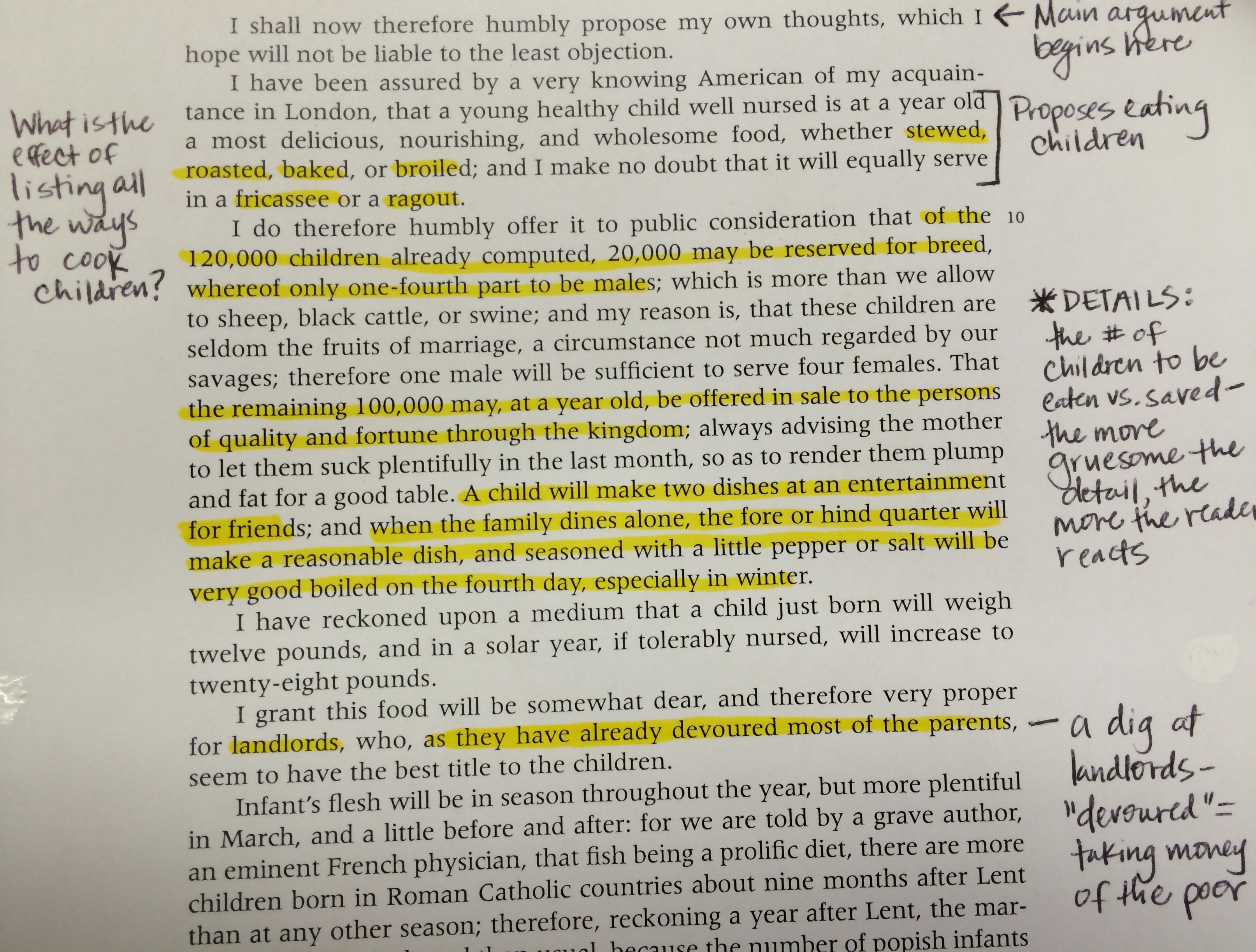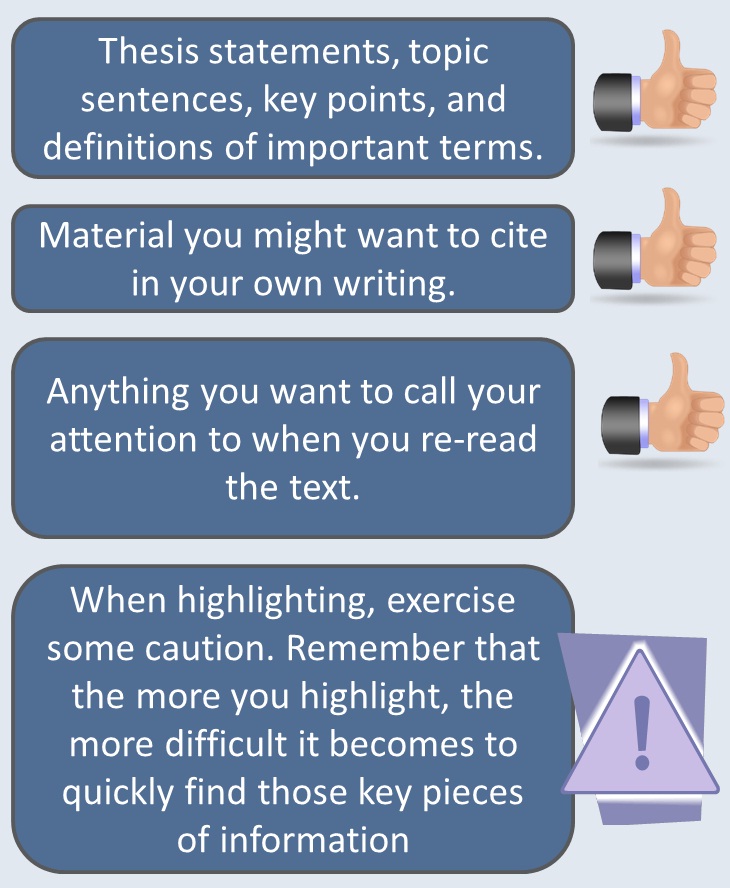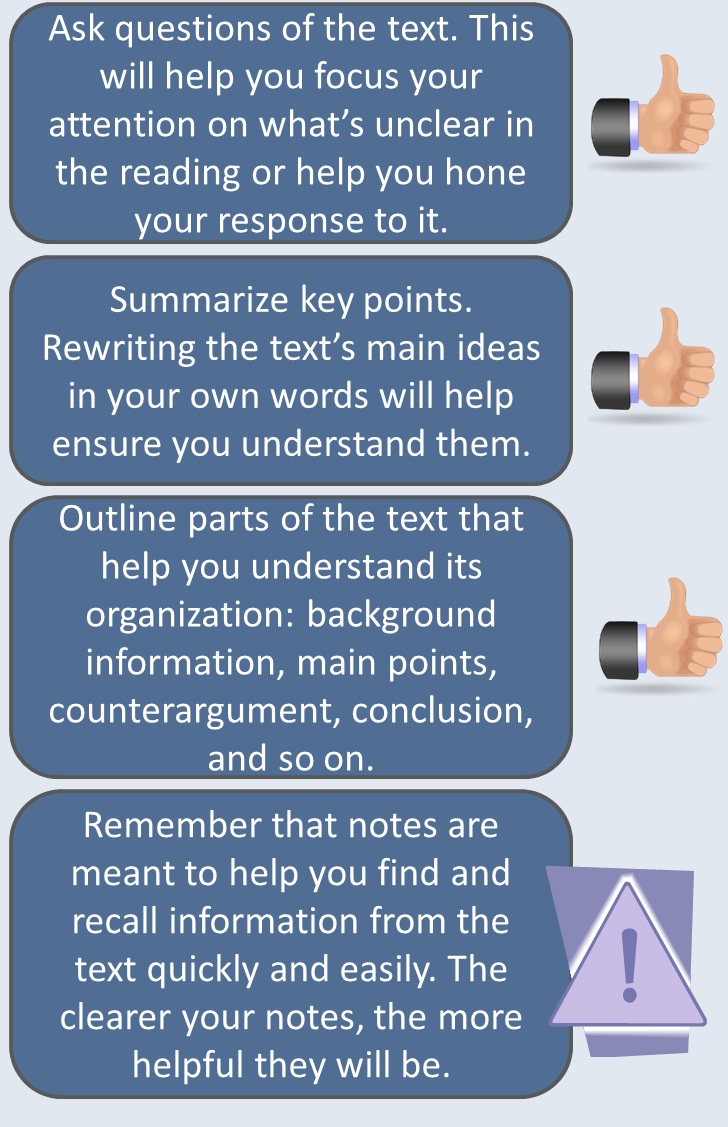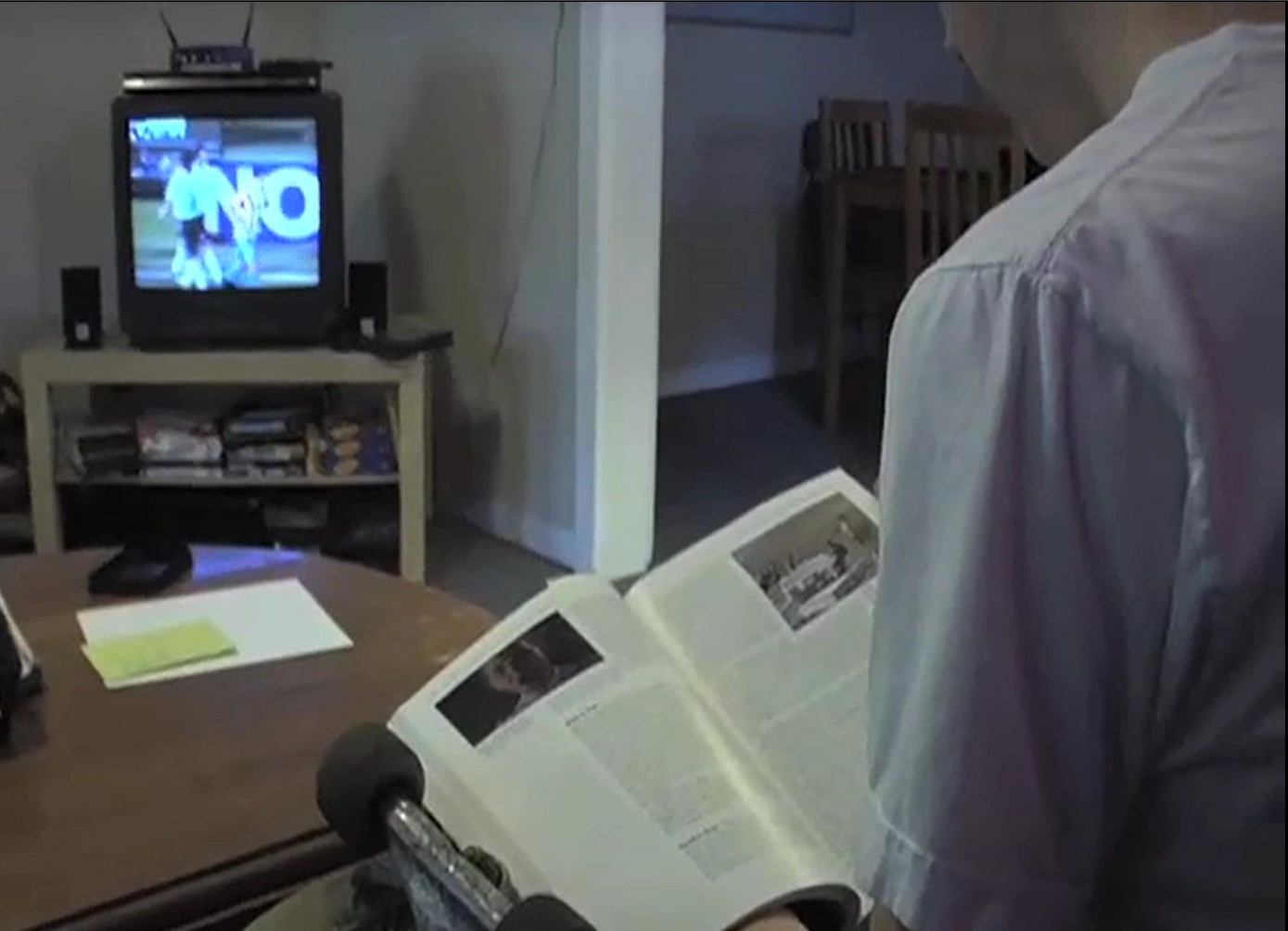Chapter 2. Arga slide activity sample 2
Arga slide activity sample 2
Introduction

Activity Objective:
This tutorial will encourage you to explore some strategies for active reading, including:
- Understanding objectives for reading
- Highlighting
- Note taking
- Reflecting on your ideal environment for reading
Click the forward and backward arrows to navigate through the slides. You may also click the above outline button to skip to certain slides.
What is active reading?

Reading in an academic setting can be quite different than reading for pleasure. Your level of familiarity and comfort with the material you will be assigned to read in your classes will vary; this means that different pieces of reading will present challenges you will have to strategize to overcome. Having a range of active reading strategies at your disposal will help you figure out how to read, understand, and make use of practically any text you encounter.
Active Reading Skills
Watch this brief video, which will introduce you to just a few strategies for active reading.
As you watch the video, think about a recent reading assignment where you have struggled with the text. Did you use any of these strategies? Do you think they might have helped you concentrate on and absorb the text?
What are some typical reading objectives?

Reading is not a one-
Highlighting

What are some types of information I should highlight?

Highlighting a text, either with a highlighter or on screen using a highlight tool (built into most e-
Quiz: Useful Highlights
For the following examples, use the dropdowns to indicate whether or not these pieces of information are useful to highlight.
| Are these pieces of information worth highlighting? | |
|---|---|
| The definition of an unfamiliar term. | |
| An entire paragraph. | |
| A great quote that summarizes the argument a text is making. | |
Note-Taking

What types of notes should I take?

Note-
Quiz: Useful Notes
For the following examples, use the dropdowns to indicate whether or not these types of notes are useful.
| Are these types of notes useful? | |
|---|---|
| Writing “Hmmm” in the margin without making it clear what is causing you to wonder. | |
| Briefly rewriting a key point so that it is easier to understand. | |
| Pointing out how a text transitions from making an argument to defending that argument against possible objections. | |
A note about e-readers and digital note-taking


Most e-
If you prefer taking notes on a computer, tablet, or smartphone instead of directly on the page, there are many free programs designed to help you take, organize, and store your notes. The most popular program is Evernote.
Reading Environment

What environmental factors should I consider?

Your reading environment refers to the ideal time, place, and circumstances in which you read. We don’t all read best in the same environments, so it is important to take time to reflect on your surroundings and assess how well they support active reading.
Reflect on your reading strategies
The following questions will ask you to think about your strategies for reading as well as how you might improve them by incorporating some of the tips in this tutorial.
Reflect on your reading strategies
Use the space below to answer the following question.
Before working through this tutorial, how frequently did you employ the active reading strategies covered here: setting objectives for reading, highlighting, annotating, thinking about your reading environment? Have you used other strategies that weren’t covered? What are they, and how well do they help you with your reading for class?
Reflect on your reading strategies
Use the space below to answer the following question.
When you read for class, what causes you the most difficulty? Is it the complexity of the text? Distractions? Trouble remembering what you have read?
Reflect on your reading strategies
Use the space below to answer the following question.
What strategies do you currently use to try to overcome those difficulties?
Reflect on your reading strategies
Use the space below to answer the following question.
Having completed this tutorial, what are some strategies for active reading you plan to try? What do you hope incorporating these strategies into your reading will help you accomplish?
Congratulations! You have completed this activity.
Total Score: out of (%)
You have received a provisional score for your essay answers, which have been submitted to your instructor.